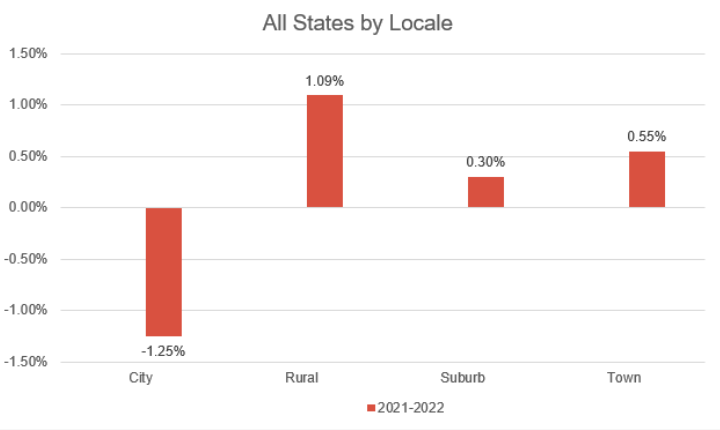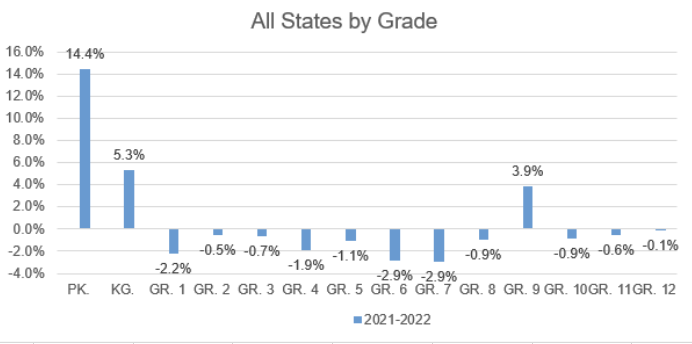Burbio's
ESSER III plan dataset is now up to over 4,700 districts covering 72% of U.S. K-12 students and over $81 billion in school spending.
Click here for a short video on how partners can search the database.
1. Districts across the U.S. outlined their security procedures to parents after a mass school shooting in Uvalde, TX resulted in twenty-one fatalities:
- At North Texas Collegiate Academy, TX the district Superintendent describes the recently approved Guardian Program, which will roll out this summer. "Under the Guardian Policy, a school board may authorize . . . employees who are authorized to carry firearms on school campuses. The Guardians remain anonymous . . Every campus will have trained Guardians on-site. . . training includes psychological screening. .. threat assessment . .. marksmanship evaluation. . . . simulation training and active shooter drills." The letter continues, "If an intruder entered your home with ill intent, you would do everything in your power to protect your family. Our staff and students deserve the same protection. . . "
- At Frederick County Public Schools, MD the district outlined their "Avoid Deny Defend" policy where "staff will instruct students to move as quickly as possible away from the threat to avoid danger, to deny access with barriers and remain quietly out of sight and, if necessary, to aggressively defend themselves . . ."
- Fort Zumwalt School District, MO described their security precautions including "hot button police radios that bypass 911 in case of an emergency," electronic locks at all school entrances, glass-strengthening film at all elementary school entrances, gated parking lots and security at all high schools, security cameras, electronic background checks, and School Resource Officers and Crisis Counselors.
- North Branch Area Schools, MI writes, "We now have a full time School Resource Officer . .. 100% dedicated to North Branch Area Schools. . . ALICE (active shooter) training for all district employees will be held . . . in August." Further, the district will provide security badges to all employees "that in seconds can alert the entire district to an incident and put the school on lockdown."
- From Tucson Unified School District, AZ, "(We are) the only district in the State of Arizona that has its own School Safety Department . . . Officers work collaboratively with campus Principals to develop emergency responses, crisis plans . . . to address the anxiety and fear that many in our community are feeling we will be reviewing emergency response protocols . . . . at an upcoming June board meeting."
- Douglas County School District, CO, on their detailed "Partnership for Safety" page, describes their Safety Committee, formed in 2013, consisting of local and regional police and fire departments, school district leaders, and community representation.
- In this note from Hampton City Schools, VA they list out nineteen safety measures in place, from visitor management systems, panic buttons, lockdown drills, safety inspections, metal detectors, a tip hotline, and routine visits from canine teams that detect weapons and narcotics.
- Dover Area School District, PA describes a list of their safety measures, including all buildings having secured vestibules, single points of entry, interior and exterior cameras, staff identification badges, visitor protocols, ongoing threat and risk assessments, two School Resource officers conducting building patrols, and visits from regional police departments.
- Newton Public Schools, MA provides a list of ongoing safety and security precautions, and also describes other programs including suicide prevention, anti-bullying initiatives, partnerships with local social services agencies, and on-site counselors and psychologists.
- In Charleston County School District, SC the district circulated videos describing the district's Standard Response Protocol and district security measures.
- We saw a number of short-term precautions between now and the end of the year. In Baldwin-Whitehall School District, NY a pop-up reads, "All District schools are operating in a modified lockdown for the remainder of this week. Visitors must have an appointment to enter any school . . . all school facilities (i.e. track) are closed to the public when in use by student groups . . . " Galena Park ISD, TX declared Thursday and Friday "no backpack days" to "insure the safety of students." We also saw many references to increased police presence on campuses including these from Sarasota County Schools, FL and Greendale Schools, WI.
2. We now have 2021/22 enrollment data from 46 states plus the District of Columbia, representing 95.7% of US K-12 public school students. We are missing Tennessee, Kentucky, Idaho and Montana. From the states we have, overall enrollment in 2021/22 is up 0.1% versus 2020/21. In the analysis below, we are able to cover enrollment comparisons among districts making up 90% of US K-12 of US students, as some districts in state-level reporting are difficult to match up with NCES figures due to inconsistent labeling and aren't included.
Below are the changes by NCES locale and by grade level across the two academic years. The national trend of declines in City districts and increases in the other locales continues, as does the trend of increases in Pre-K, K, and Grade 9, with declines other grades. This recent piece in The 74 and this piece in Chalkbeat report on the ninth-grade increase phenomenon.
 |
 |
The pie chart below gives a slightly different look at the same data set, comparing the percentage of overall US K-12 population attending schools in different locales in those two years. The largest number of students in the US attend schools in the Suburb category:
In our
blogs of April 11th and 18th and May 2nd we looked at enrollment breakdowns for Indiana, Connecticut, Georgia, Utah, Michigan, California, New Jersey, and Pennsylvania. This week we look at two additional states. First, Ohio. where enrollment increased by 0.7% between years. Below are the locale-level and grade shifts within the state:
And now Texas. where enrollment increased by 0.6% and below are the breakouts by locale and grade: